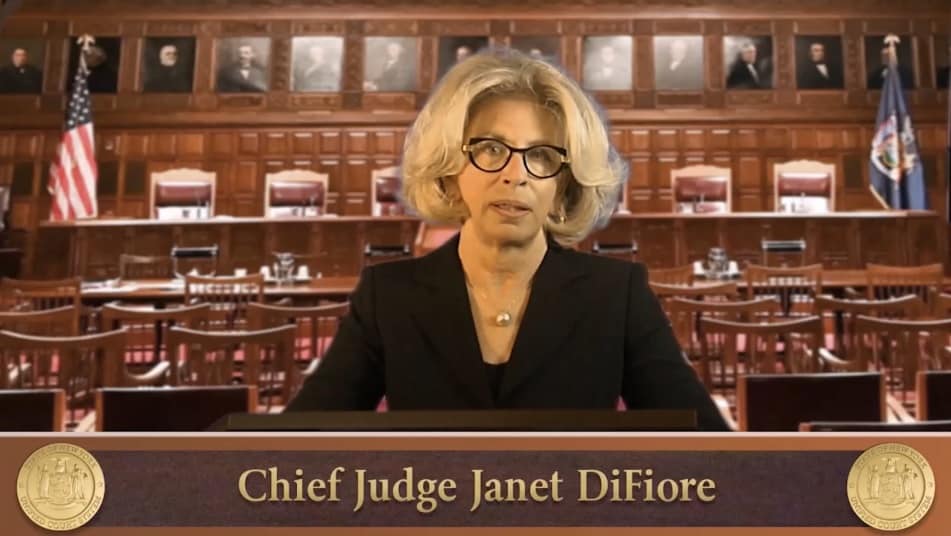
Delays Likely for June 23 Primary
NYS Chief Judge Janet DiFiore, from Westchester, wrote a 5-2, majority opinion on April 27 that overturned the redistricting lines drawn by state democrats for congress and the state senate, throwing the 2022 primary season into chaos in the Empire State. DiFiore and the justices ruled that democrats drew new lines that ignored a 2014 State Constitutional referendum which appointed and Independent Redistricting Commission, IRC, to come up with bi-partisan boundaries.
Calling the lines drawn by NY Democrats a “procedurally infirm redistricting plan,” DiFiore wrote that “any redistricting plan to be voted on by the legislature must be initiated by the Independent Redistricting Committee (IRC).”
“That is simply not what the people voted for when they enacted the constitutional provision at issue. Although the IRC process is not perfect, it is preferable to a process that removes the people’s representatives entirely from the process.
“The legislature responded by creating and enacting maps in a nontransparent manner controlled exclusively by the dominant political party — doing exactly what they would have done had the 2014 constitutional reforms never been passed,” DiFiore wrote.
The court also ruled that there is not enough time for the IRC to come back with a new redistricting proposal, which means that a Special Master will be appointed by a lower court to come up with fair bipartisan lines for congress and state senate “with all due haste.”
The court added that “it will likely be necessary to move the congressional and senate primary elections to August, New York routinely held a bifurcated primary until recently, with some primaries occurring as late as September. We are confident that, in consultation with the Board of Elections, Supreme
Court can swiftly develop a schedule to facilitate an August primary election,”
A majority on the court found that “we are not convinced that we have no choice but to allow the 2022
primary election to proceed on unconstitutionally enacted and gerrymandered maps….Based on the foregoing, the enactment of the congressional and senate maps by the legislature was procedurally unconstitutional, and the congressional map is also substantively unconstitutional as drawn with impermissible partisan purpose, leaving the state without constitutional district lines for use in the 2022 primary and general elections.”
One of the reasons for the breakdown in the process was that the members of the IRC were unable to come to an agreement on a compromise redistricting plan. So the group whose job it was to draw bipartisan maps couldn’t do so. The State Senate did vote to reject the first IRC redistricting plan, and the IRC was sytmied by their own partisanship to come up with a second plan to submit.
The IRC has 10 members, 8 of whom are appointed by the majority and minority leaders of the senate. The other two are appointed by the 8 members.
“As a result of their disagreements, the IRC submitted, as a first set of maps, two proposed redistricting plans to the legislature — maps from each party delegation — as is constitutionally permitted if a single consensus map fails to garner sufficient votes The legislature voted on this first set of plans without amendment as required by the Constitution and rejected both plans. The legislature notified the IRC
of that rejection, triggering the IRC’s obligation to compose — within 15 days — a second
redistricting plan for the legislature’s review.”
In January 2022, “the IRC announced that it was deadlocked and, as a result, would not present a second plan to the legislature… In December 2021 and January 2022, however, negotiations between
the IRC members deteriorated and the IRC, split along party lines, was unable to agree upon consensus maps. According to the IRC members appointed by the minority party, after agreement had been reached on many of the district lines, the majority party delegation of the IRC declined to continue negotiations on a consensus map.”




